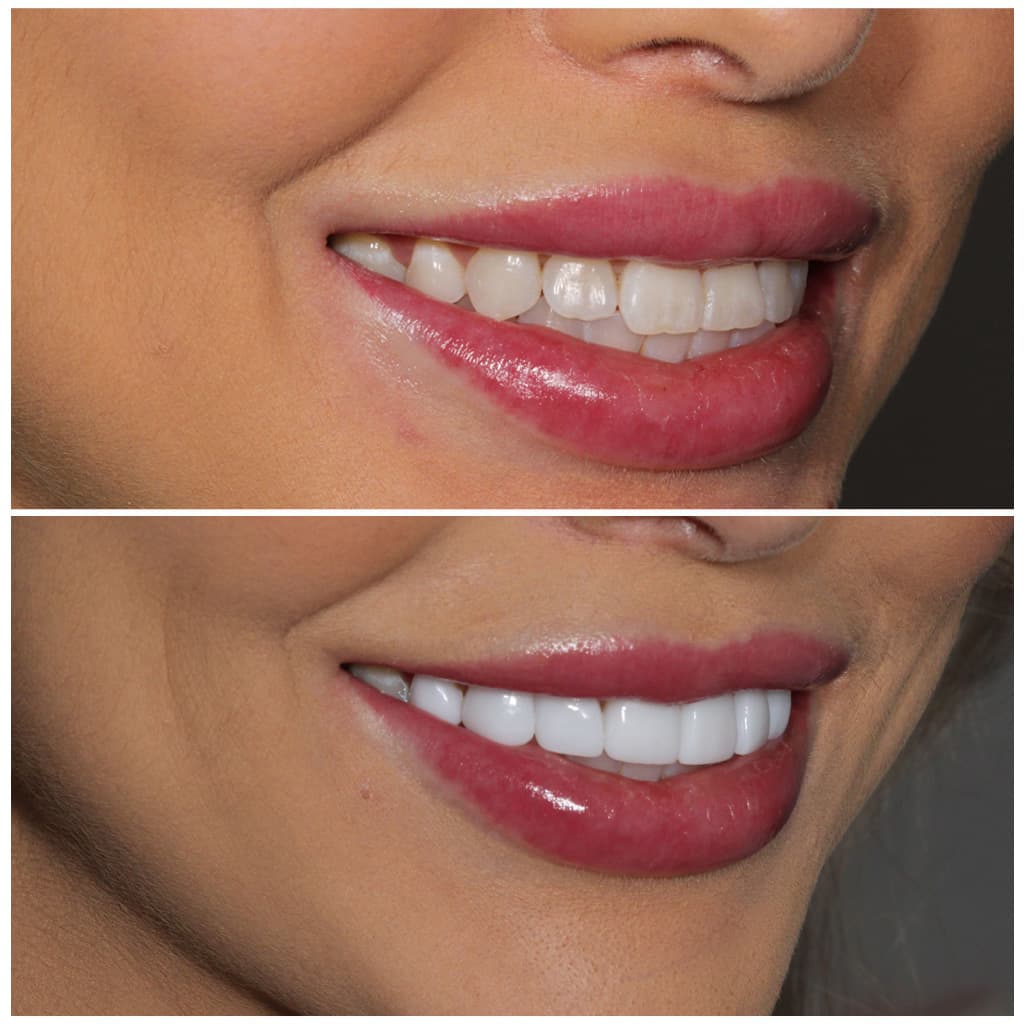Tooth Porcelain Veneers

The pursuit of a flawless smile has become a staple of modern dentistry, with various treatments and procedures designed to enhance the appearance and health of our teeth. Among these, tooth porcelain veneers have emerged as a highly sought-after solution for individuals seeking to correct cosmetic imperfections and achieve a radiant, confident smile. But what exactly are porcelain veneers, and how do they work their magic on our teeth?
At the heart of porcelain veneer technology lies a sophisticated understanding of dental anatomy and materials science. Essentially, a veneer is a thin layer of porcelain that is bonded to the front of a tooth to improve its appearance. This layer, typically measuring between 0.5 to 1.5 millimeters in thickness, is carefully crafted to mimic the natural shade, shape, and texture of the surrounding teeth, ensuring a seamless blend that appears entirely natural.
The process of obtaining porcelain veneers is a meticulous one, requiring precise planning, skilled craftsmanship, and a deep understanding of the patient’s dental structure and aesthetic goals. It begins with a thorough consultation, where the dentist evaluates the patient’s teeth and discusses their desires and expectations. This initial meeting is crucial, as it sets the stage for the entire procedure, including the number of veneers needed, the shade, and the overall smile design.
Once the plan is in place, the next step involves preparing the teeth. This preparation is minimal, typically requiring the removal of a small amount of enamel from the front of the tooth to accommodate the veneer. The amount of enamel removed is usually equal to the thickness of the veneer, ensuring that the tooth remains the same size. Following preparation, impressions of the teeth are taken and sent to a dental laboratory, where skilled technicians craft the veneers. This process can take a couple of weeks, during which time the patient may be fitted with temporary veneers to protect the prepared teeth.
The final step is the bonding process, where the veneers are permanently attached to the teeth. This is a precise procedure, requiring the dentist to clean and prepare the tooth surface, apply a special cement, and then carefully place the veneer. Once in place, the veneer is hardened with a special light, creating a strong bond between the porcelain and the tooth.
One of the most significant advantages of porcelain veneers is their versatility. They can be used to correct a wide range of cosmetic issues, including discolored teeth, chipped or worn teeth, misaligned teeth, and gaps between teeth. Moreover, porcelain veneers are highly resistant to stains, maintaining their brilliance over time, and are designed to withstand the forces of biting and chewing, making them a durable solution for long-term smile enhancement.
However, like any dental procedure, porcelain veneers are not without their considerations. The process is irreversible due to the removal of enamel, and veneers, although durable, are not indestructible. They can chip or crack under excessive force, such as biting on hard objects. Additionally, the cost of porcelain veneers can be significant, especially for a full smile makeover.
Despite these considerations, the benefits of porcelain veneers for those seeking to transform their smile are undeniable. They offer a chance to correct multiple cosmetic issues at once, providing a uniform, radiant appearance that can profoundly impact one’s confidence and self-perception. With proper care, including regular dental check-ups and good oral hygiene practices, porcelain veneers can last for many years, serving as a long-term investment in one’s smile and overall well-being.
In conclusion, tooth porcelain veneers represent a pinnacle of dental cosmetic achievement, blending art and science to create smiles that are not only aesthetically pleasing but also functional and durable. As technology continues to evolve, we can expect even more sophisticated veneer designs and materials, further expanding the possibilities for smile enhancement. For those considering this path, it’s essential to consult with a skilled dentist who can provide personalized guidance and care, ensuring that the journey to a flawless smile is both successful and satisfying.
What are the main advantages of choosing porcelain veneers over other cosmetic dental treatments?
+Porcelain veneers offer several key advantages, including their ability to correct a wide range of cosmetic issues, their durability, resistance to stains, and the natural appearance they provide. They are also a relatively conservative treatment option compared to crowns, requiring less tooth preparation.
How long do porcelain veneers typically last?
+With proper care, porcelain veneers can last for 10 to 20 years or more. Factors that can affect their durability include oral hygiene practices, diet, and the presence of underlying dental conditions such as bruxism.
Are porcelain veneers suitable for everyone?
+No, porcelain veneers are not suitable for everyone. They are best for individuals with good oral health and sufficient tooth enamel. Conditions such as severe tooth decay, gum disease, or significant misalignment may require additional treatments before veneers can be considered.
Can porcelain veneers be used to address issues with tooth alignment?
+To some extent, yes. Porcelain veneers can be used to make slight adjustments in the appearance of tooth alignment. However, for more significant misalignments, orthodontic treatment may be recommended in conjunction with or before veneers.
How much do porcelain veneers cost?
+The cost of porcelain veneers can vary significantly based on factors such as location, the experience of the dentist, the complexity of the case, and the materials used. Generally, the cost per veneer can range from 900 to 2,500. It’s essential to consult with a dentist to get a personalized estimate.
